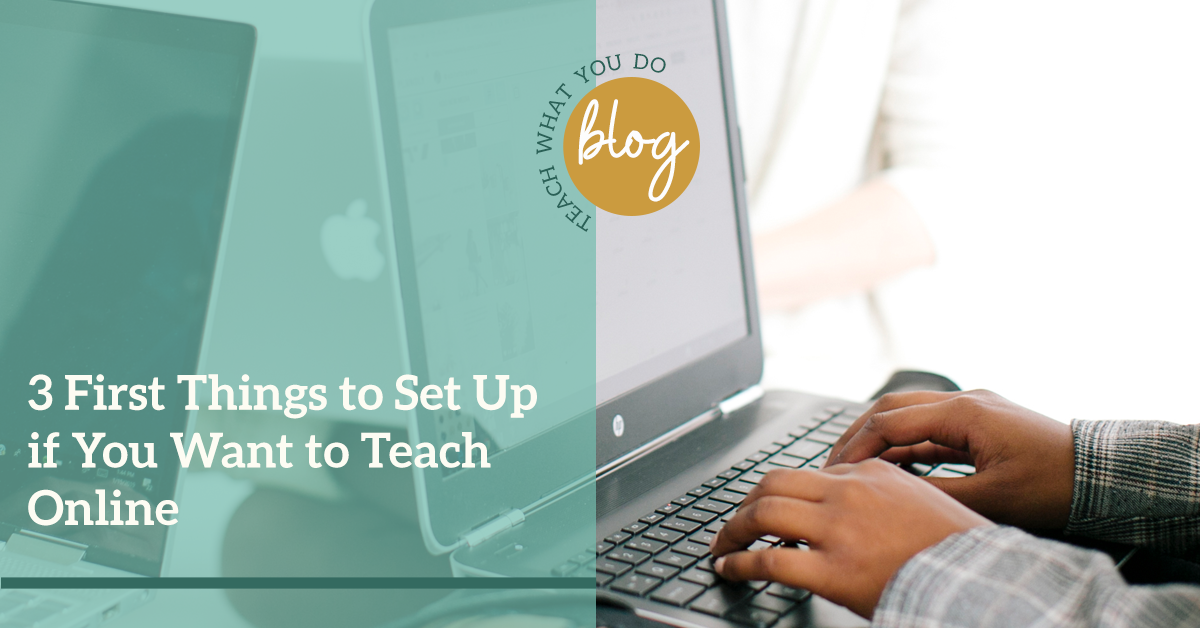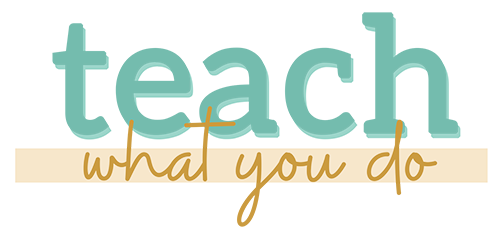
Ready to teach online? And sell your courses? Welcome to online marketing.
Let's get you ready to succeed at this work by making sure you set up and maintain three key online business pieces:
1. Your website.
Your website is your home base and it is an important tool for:
- presenting your credentials and building authority
- attracting and providing a destination for online traffic interested in what you offer
- building your email list
- delivering your class materials
Your website doesn't have to be elaborate and you don't need to spend thousands of dollars getting it create. WordPress is my top choice for setting up a simple website, but–if you just can't go there tech-wise–then use the drag-and-drop ease of the tool Squarespace.
You'll need these basic pages on your website to start:
- Home page: where you make clear who you are and what you offer and present an opt-in to your email list.
- Blog page: where you share your weekly free content. Even if you're not writing blog posts, you can share other content here, like podcast episodes or videos.
- About page: where you let people know what you can do for them and why you're qualified to do it.
- Contact page: where people can get in touch with you.
2. Your email list
To run an online business, you'll need to start collecting email addresses and building an email list.
The people on that list have invited you into their email inbox. They want to hear from you, and this will be an essential tool for selling your online course.
You'll use a tool that lets you comply with can-spam laws as you collect email address and that includes automation tools for segmenting you list and sending offers based on actions your list members take. marketing.
My top recommendations for my students are ActiveCampaign, Drip, and ConvertKit.
You'll need to create something you can give to people in exchange for their email address: a “lead magnet.” This should be a resource that can be used immediately and yield quick results.
Don't lolligag on this. Make a first lead magnet, get your email service, and plow on through the tech of getting the form to collect email addresses set up on your website.
See my past blog post that digs into more detail on this: How to Make a Lead Magnet and Set Up Email Automation to Deliver It.
#3. Free weekly content.
In addition to creating your course content–and, in fact, BEFORE the creation of your course content, you'll need to create free weekly content.
This could be weekly blog posts, short recorded videos, live video sessions, or podcasts.
Weekly content that delivers value will attract and build your audience of potential students.
It will also build your authority by its content and its consistency. You're showing up, and you're showing that you're here for the long run.
Here's a deep dive from an earlier blog post on this topic: “A Step-by-Step Process to Create Content that Builds and Nurtures Your Audience”
Are you ready to get these three essential online business assets created?
Again, you need:
- a website
- an email list and a way to grow it
- ongoing weekly free content.


